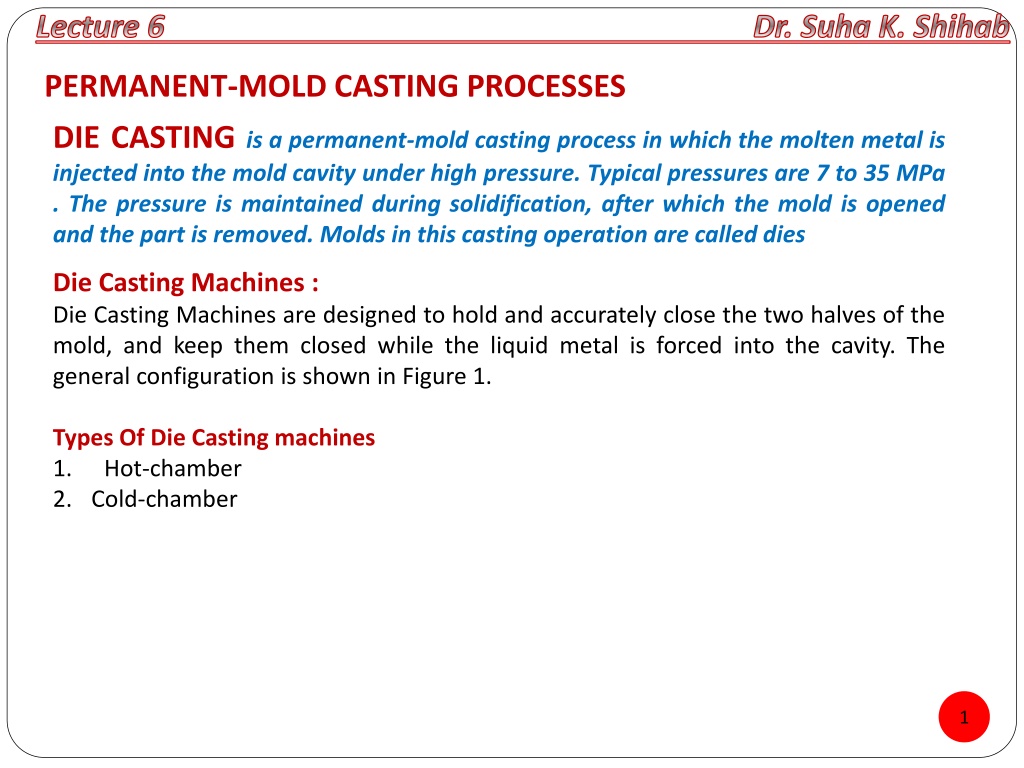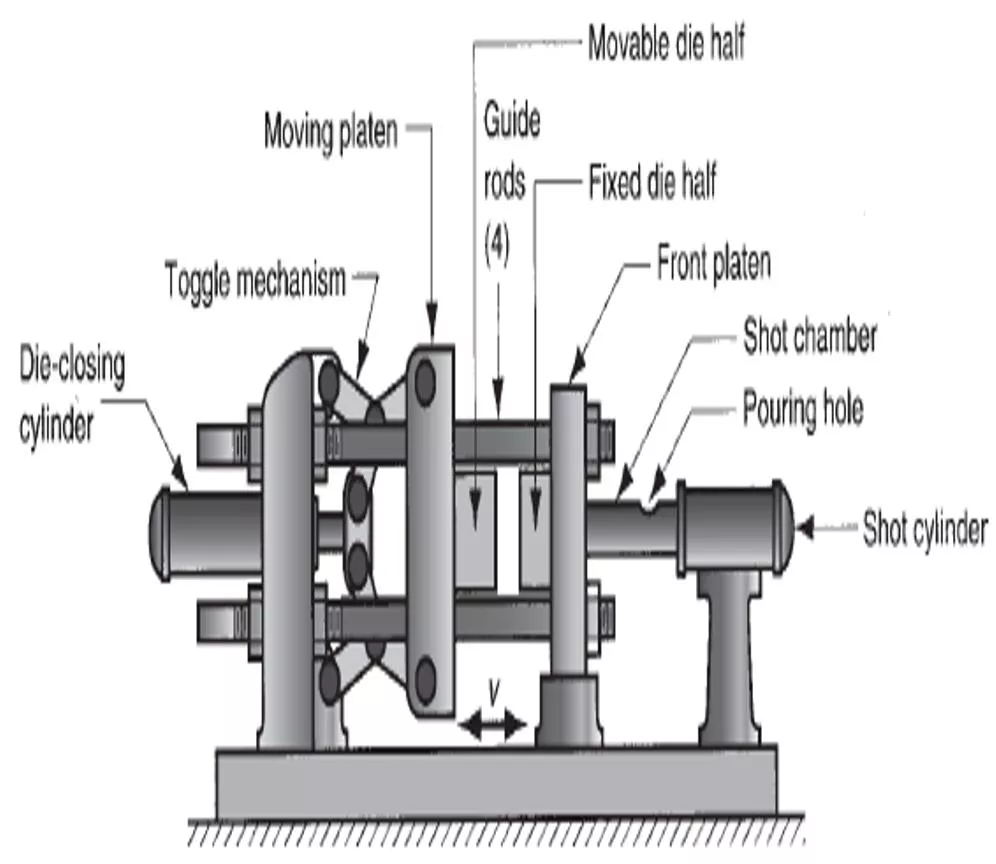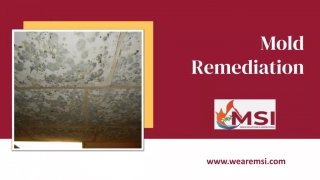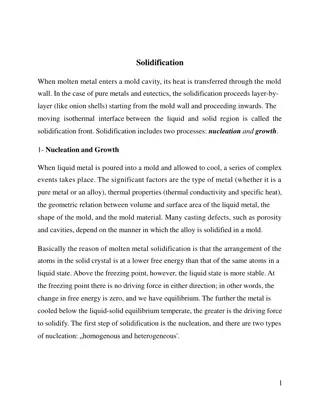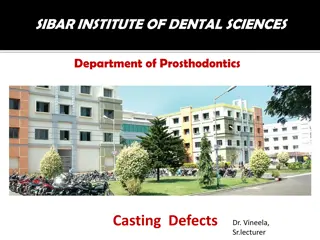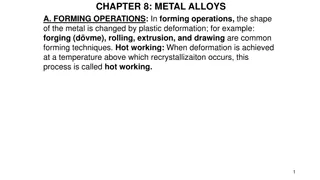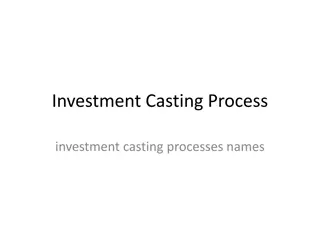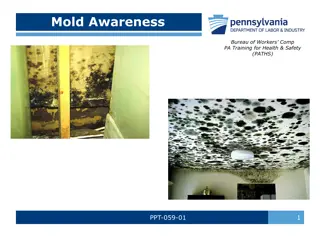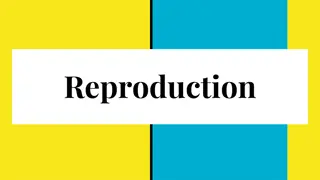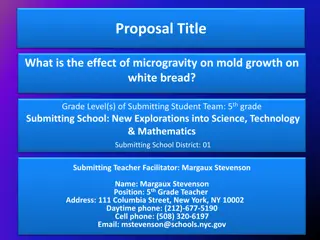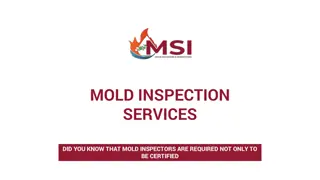Permanent-Mold Die Casting Processes Overview
Permanent-mold die casting is a process where molten metal is injected into a mold cavity under high pressure, maintained during solidification. This process utilizes hot-chamber and cold-chamber die casting machines for casting various metals like zinc, aluminum, brass, and magnesium. Hot-chamber machines melt metal in a container on the machine and inject it under pressure, while cold-chamber machines pour molten metal into an unheated chamber from an external container for injection. The cycle, pressures, and materials involved differ in these die casting methods as illustrated in the figures.
Download Presentation

Please find below an Image/Link to download the presentation.
The content on the website is provided AS IS for your information and personal use only. It may not be sold, licensed, or shared on other websites without obtaining consent from the author.If you encounter any issues during the download, it is possible that the publisher has removed the file from their server.
You are allowed to download the files provided on this website for personal or commercial use, subject to the condition that they are used lawfully. All files are the property of their respective owners.
The content on the website is provided AS IS for your information and personal use only. It may not be sold, licensed, or shared on other websites without obtaining consent from the author.
E N D
Presentation Transcript
Lecture 6 Dr. Suha K. Shihab PERMANENT-MOLD CASTING PROCESSES DIE CASTING is a permanent-mold casting process in which the molten metal is injected into the mold cavity under high pressure. Typical pressures are 7 to 35 MPa . The pressure is maintained during solidification, after which the mold is opened and the part is removed. Molds in this casting operation are called dies Die Casting Machines : Die Casting Machines are designed to hold and accurately close the two halves of the mold, and keep them closed while the liquid metal is forced into the cavity. The general configuration is shown in Figure 1. Types Of Die Casting machines 1. Hot-chamber 2. Cold-chamber 1
Lecture 6 Dr. Suha K. Shihab Hot-chamber Machines The metal is melted in a container attached to the machine, and a piston is used to inject the liquid metal under high pressure into the die. Typical injection pressures are 7 to 35 Mpa. The casting cycle is summarized in Figure2. Hot-chamber die casting imposes a special hardship on the injection system because much of it is submerged in the molten metal. The process is therefore limited in its applications to low melting- point metals that do not chemically attack the plunger and other mechanical components. The metals include zinc, tin, lead, and sometimes magnesium. Cold-chamber Die Casting Machines molten metal is poured into an unheated chamber from an external melting container, and a piston is used to inject the metal under high pressure into the die cavity. Injection pressures used in these machines are typically 14 to 140 Mpa. The production cycle is explained in Figure3. Compared to hot-chamber machines, cycle rates are not usually as fast because of the need to ladle the liquid metal into the chamber from an external source. Nevertheless, this casting process is a high production operation. Cold-chamber machines are typically used for casting aluminum, brass, and magnesium alloys. Low-melting-point alloys (zinc, tin, lead) can also be cast on cold-chamber machines, but the advantages of the hot- chamber process usually favor its use on these metals. 2
Lecture 6 Dr. Suha K. Shihab FIGURE 1 General configuration of a (cold chamber) die casting machine. 3
Lecture 6 Dr. Suha K. Shihab FIGURE 2 Cycle in hot chamber casting: (1) with die closed and withdrawn, molten metal flows into the chamber; (2) plunger forces metal in chamber to flow into die, maintaining pressure during cooling and solidification; and (3) withdrawn, die is opened, and solidified part is ejected. Finished part is shown in (4). plunger plunger is 4
Lecture 6 Dr. Suha K. Shihab FIGURE3 Cycle in cold-chamber (1) with die closed and ram withdrawn, molten metal is poured into the chamber; (2) ram forces metal to flow into die, maintaining pressure during cooling solidification; and (3) ram is withdrawn, die is opened, and part is ejected. (Gating system simplified.) casting: and is 5
Lecture 6 Dr. Suha K. Shihab Molds used in die casting Materials of Die Casting Mold are usually made of tool steel, mold steel, or maraging steel. Tungsten and molybdenum with good refractory qualities are also being used, especially in attempts to die cast steel and cast iron. Types of Dies 1. single-cavity 2. multiple-cavity. Single-cavity dies are shown in Figures 2 and 3. Ejector pins are required to remove the part from the die when it opens, as in the diagrams. These pins push the part away from the mold surface so that it can be removed. Lubricants must also be sprayed into the cavities to prevent sticking. Because the die materials have no natural porosity and the molten metal rapidly flows into the die during injection, venting holes and passageways must be built into the dies at the parting line to evacuate the air and gases in the cavity. The vents are quite small; yet they fill with metal during injection. This metal must later be trimmed from the part. Also, formation of flashis common in die casting, in which the liquid metal under high pressure squeezes into the small space between the die halves at the parting line or into the clearances around the cores and ejector pins. This flash must be trimmed from the casting, along with the sprue and gating system. 6
Lecture 6 Dr. Suha K. Shihab Advantages of die casting (1) high production rates possible. (2) economical for large production quantities. (3) close tolerances possible, on the order of 0.076mm for small parts; (4) good surface finish. (5) thin sections are possible. (6) rapid cooling provides small grain size and good strength to the casting limitation of die casting 1) the metals cast, is the shape restriction. 2) The part geometry must allow for removal from the die cavity 7
